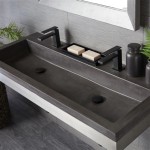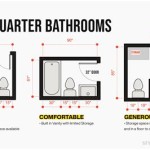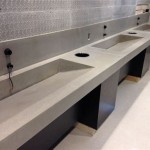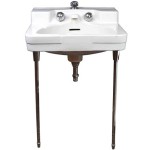How Much Does A Bathroom Exhaust Fan Cost To Run?
Bathroom exhaust fans are essential for removing excess moisture and unpleasant odors, preventing mold and mildew growth, and maintaining good indoor air quality. However, homeowners often wonder about the operating costs associated with running these fans. Understanding the factors influencing these costs empowers individuals to make informed decisions about usage and potential upgrades.
Electricity Costs
The primary cost associated with running a bathroom exhaust fan is the electricity it consumes. Electricity costs are calculated based on kilowatt-hours (kWh), representing the amount of power used over time. A typical bathroom exhaust fan consumes between 5 and 60 watts, depending on the fan's size, features, and CFM (cubic feet per minute) rating. Higher CFM ratings generally correlate with higher wattage and, consequently, increased electricity consumption.
To calculate the cost of running a bathroom exhaust fan, one must determine the local electricity rate, typically expressed in cents per kWh. This information can usually be found on a utility bill or the utility company's website. Once the wattage and electricity rate are known, the hourly operating cost can be calculated. For example, a 30-watt fan running for one hour at an electricity rate of $0.15 per kWh would cost approximately $0.0045 (30 watts / 1000 * $0.15).
Fan Usage Patterns
The actual cost of running a bathroom exhaust fan depends significantly on usage patterns. The frequency and duration of fan operation play crucial roles in determining overall expenses. A fan used for short periods, such as during and immediately after showers, will incur lower costs compared to a fan left running continuously.
Consider a household that uses a 30-watt fan for 30 minutes per day. Using the same electricity rate of $0.15 per kWh, the daily cost would be $0.00225. Over a month, this translates to approximately $0.07, and annually, the cost would be around $0.81. If the fan usage increases to one hour per day, these costs would double.
Energy-Efficient Options
Homeowners seeking to minimize operating costs can explore energy-efficient bathroom exhaust fans. Models with Energy Star certification are designed to consume less electricity while maintaining effective ventilation. These fans often incorporate features such as DC motors, which offer higher efficiency compared to traditional AC motors. While the initial purchase price of an Energy Star certified fan might be slightly higher, the long-term savings on electricity can offset this difference.
Upgrading to an energy-efficient model can significantly reduce running costs. For instance, switching from a 60-watt fan to a 10-watt Energy Star certified model can result in substantial savings over time, especially in households with frequent fan usage.
Additional Factors
While electricity costs are the primary expense associated with running a bathroom exhaust fan, other factors can indirectly contribute to overall costs. Proper installation and regular maintenance are essential for optimal performance and efficiency. A poorly installed fan might require more energy to operate effectively, while neglecting maintenance can lead to premature motor failure and increased replacement costs.
Features such as humidity sensors and timers can also influence operating costs. Humidity sensors automatically activate the fan when moisture levels exceed a certain threshold, ensuring efficient ventilation without unnecessary continuous operation. Timers allow users to set the duration of fan operation, preventing the fan from being left on indefinitely. These features can contribute to energy savings and reduce overall operating expenses.
Ventilation Needs
The size and ventilation needs of the bathroom also play a role in determining the appropriate fan size and, consequently, operating costs. Larger bathrooms typically require fans with higher CFM ratings to effectively remove moisture and odors. While higher CFM fans might consume more electricity, they are essential for ensuring proper ventilation and preventing moisture-related problems, which can lead to costly repairs in the long run.
Careful consideration of bathroom size and ventilation requirements can help homeowners select the right fan size for optimal performance and cost-effectiveness. Consulting with a qualified HVAC professional can provide valuable insights into determining the appropriate CFM rating for a specific bathroom.

Average Cost To Install A Bathroom Fan Forbes Home

How Much Does It Cost To Install Bathroom Ventilation And Fans Badeloft

Are Bathroom Extractor Fans Expensive To Run Victoriaplum Com

How Much Electricity Does The Bathroom Fan Use Boggs Inspection Services

Just How Much Does It Cost To Run An Extractor Fan Nrla

2024 Cost To Install Bathroom Exhaust Fan Replace Vent

Are Bathroom Extractor Fans Expensive To Run Victoriaplum Com

2024 Cost To Install Bathroom Fan Angi

How Much Electricity Does The Bathroom Fan Use Boggs Inspection Services

How Long Should You Run Your Bathroom Fan
Related Posts







